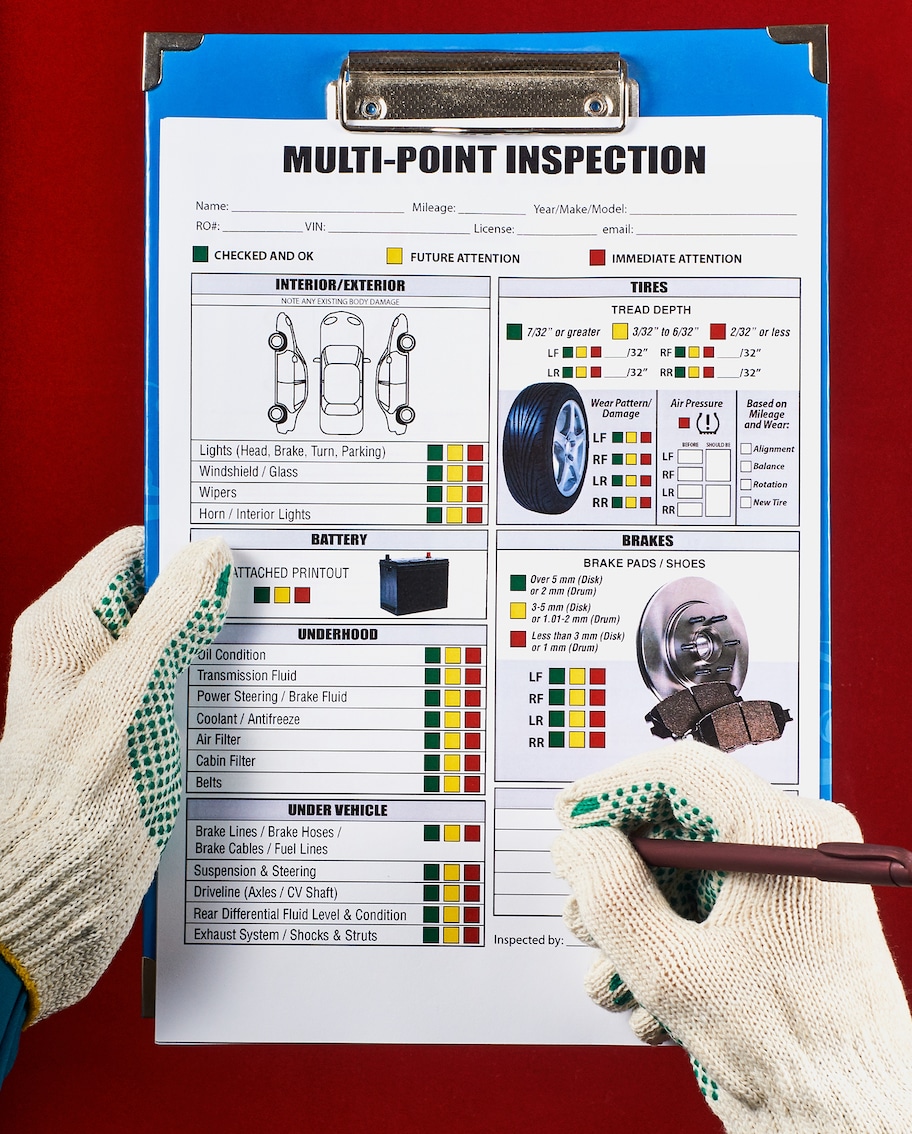Low mileage, good quality used cars are great buys these days and used car prices have been falling in the last few years; dropping from an average of $28,000 each in December 2021, down to $26,000 in December of 2023. According to Consumer Affairs used cars have fallen in price by around seven percent since 2022 and are expected to keep dropping.
Check Before You Buy a Used Car
Our Used Car Checklist
Once you have found the right make, model, color, trim level, and accessories on your list, take your time to pre-inspect the vehicle. Before you even think of a test drive, make sure you have the following covered:
Obtain a Vehicle History Report. This will tell you how many owners the car has had, how it has been treated and serviced, if it has been in any accidents, and what the car's actual mileage is. Most auto dealerships will provide a Vehicle History Report on the vehicle free of charge. If you are thinking of buying from a private party, use the car's 17-digit Vehicle Identification Number (VIN) to obtain a history report for less than $40. You'll find out if the vehicle has ever been stolen or salvaged.
The VIN number can be found by looking through the windshield on the driver's side. You'll also find it on the vehicle registration or insurance card. The VIN can tell you a lot about the specific vehicle including where it was manufactured and when. The National Highway Traffic Safety Administration (NHTSA) offers a free online VIN decoder at https://vpic.nhtsa.dot.gov/decoder/

You want to make sure the vehicle you are considering has a clear title. Don't buy a car with a branded or salvaged title. A branded title is an indication that the car has been through extensive damage and was rebuilt before being sold. A clear title also means there are no liens or debts against the vehicle that you will have to pay. Make sure the person who is selling the car is listed on the vehicle's title. Check his or her Driver's License info. It should match the Title.
You'll also want to see the car's service and maintenance records to make sure it has been properly serviced and maintained since it was new. You want a vehicle that has received a clear history of oil and filter changes, tire rotations, and ongoing scheduled service visits as suggested in the Owner's Manual. This includes maintenance of the battery, hoses, belts, fluid changes, electrical system, suspension and steering systems.

Vehicle Inspection
While most used cars are sold "as is", sometimes a car dealer or even a private seller will carry out minor fixes or take a few hundred off the price if you make a list of items you notice that need attention. Make a list of these items to go over with the seller. Take your time in walking around the car, look for any small dents or scratches in the body, check the quality of the tires and wheels, check the windshield for cracks, and look for blemishes in the paint.
How a person has cared for their vehicle tells you a lot about them. For instance, all four of the tires should match and have deep tread depth. Look for missing lug nuts or uneven wear of the tires (that might indicate the car might need a front-end alignment).
Make sure all the body panels align properly. Look for any misalignment or dents for signs of poor body repairs. Paint condition tells you a lot about how the car was maintained. Paint wears over time and you will likely see swirls or scratches to some degree, but the paint on all the body panels should be consistent. Look for overspray around door panels as these indicate the car was repainted.
Areas of blistered or chipped paint may reveal areas where rust is indicated under the paint. Don't buy a used car that exhibits signs of rust unless you are prepared for a full restoration. Some people restore old cars as a hobby, but most of us don't want to bother with rust that can lead to the vehicle having structural problems. Check under the car, around the wheel wells, for early signs of rust damage.
While doing a walk around inspection of the car, keep an eye out for any drips or leaks of various fluids under the vehicle. For instance, red fluid under the car might indicate a power steering or transmission fluid leak. Yellow or green fluid could be coolant or antifreeze leaking from the radiator, hose, or o-ring. Dark brown or black fluid could be engine oil that is leaking from a seal or from a leaking hydraulic brake line.
That brings us to things you should look for under the hood. While the engine is cool to the touch, look at the overall condition of everything in the engine bay. A clean engine is a great sign that the owner cared for the car. Look for any signs of oil leaks around gaskets, hoses, and seals. Check the battery for corrosion buildup around the terminals. Check the condition of all the hoses and belts for any signs of cracking. Pull the oil dipstick to see the condition of the engine oil. It should be light brown or golden. Before hitting the road for a test drive, check all the lights to make sure they are working properly.
Get Behind the Wheel
Since you'll be spending a lot of time behind the wheel of the car, make sure it is a comfortable place to be. Get in and adjust the seat, steering wheel and mirrors, make sure you have good visibility. If a used car has any unusual smells from the previous owner, these will make themselves known right away. Some can be a deal breaker. This can be anything from cigarette smoke odors (which can be difficult to remove) to mildew or rust on the seats or carpet that indicates there has been water damage or flood damage inside the vehicle.
Turn on the ignition switch to make sure all the interior lights and instrument lights are functioning properly. Operate every button or switch to make sure all the accessories are functioning. Start the engine and listen to it run. It should settle into a smooth idle fairly quickly. Listen for any squeaks from hoses or squeals from the power steering. Use the power windows to make sure each one operates smoothly. Jerky movements might indicate problems with a window motor.

Turn on the air conditioner to make sure it functions. Check the horn, the windshield wipers, and the functionality of the cruise control to make sure everything is working. Try the radio and speakers. Take note of anything that is not working properly. You might be able to get a price reduction for any accessories that are faulty.

Hit the Road
Few things are more fun than test driving a car that is new to you. Start the engine, adjust your seat belt, and be sure to drive over different road surfaces to see how the vehicle handles in different conditions. Drive over back roads, side streets, on ramps, highways, off ramps, and train tracks. See how it handles parallel parking chores. How does it maneuver in corners? Does it understeer or oversteer? How does it accelerate and brake? This is your chance to see if the car is a good fit with your driving style.
Check the steering, suspension and handling on the open road. Does the car drift to one side or the other? If so, it may need a front-end alignment. Listen for unusual noises and notice any abnormal vibrations that are concerning. Listen for brake squealing or grinding that could indicate worn brake pads. Vibrations through the steering wheel while braking could mean the car has warped brake rotors.
Final Tips
Remember to take your time and don't rush when inspecting and test driving your potential next car. You want to find a used car in excellent condition that will take you where you need to go safely for many years. Be sure to buy a car that fits your needs and style. Lithia Motors is here to help you. With over 75 years of experience and hundreds of dealers from coast-to-coast, we'll get you into the car of your dreams. There's a Lithia dealer near you!


